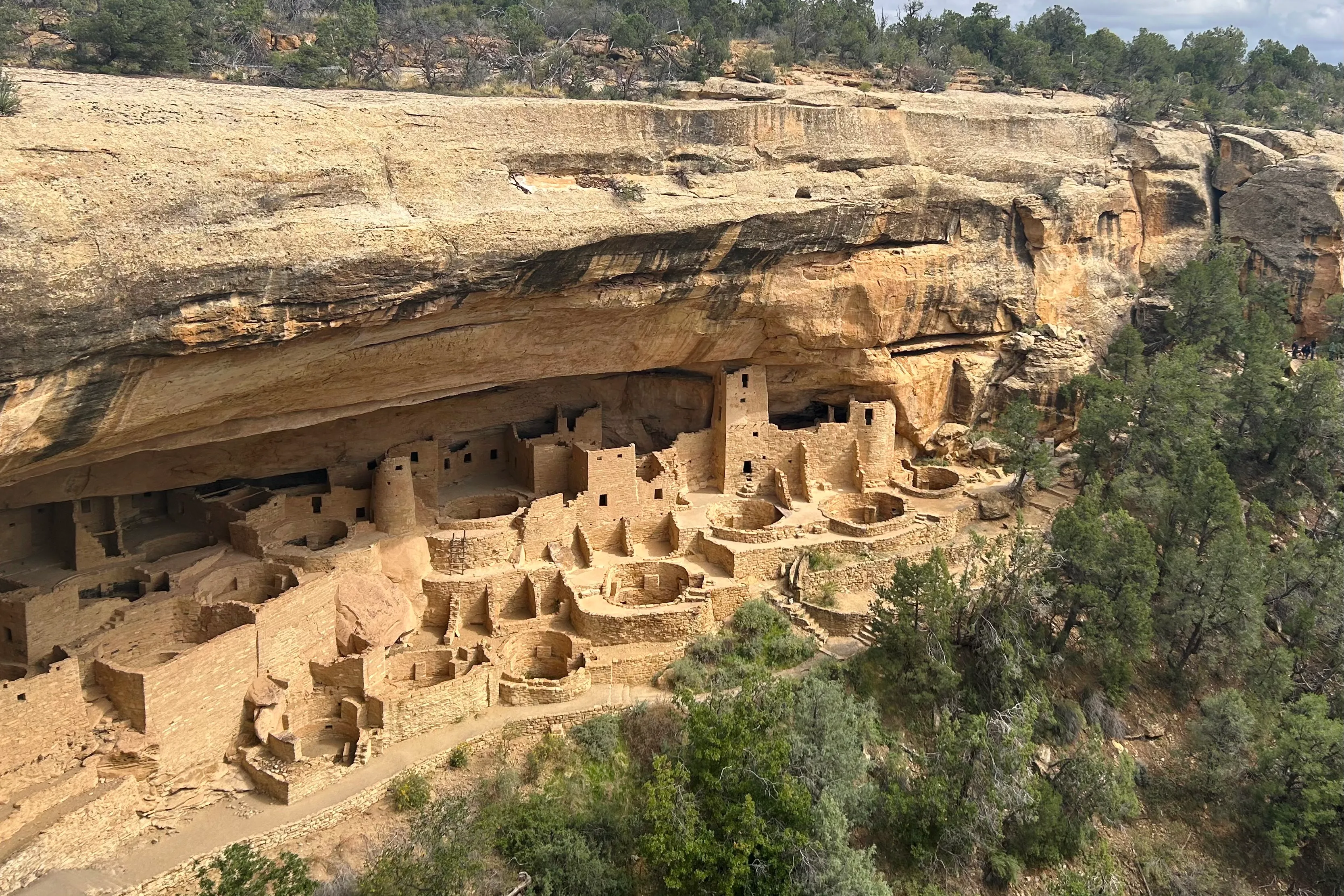Copyright Westword

Long before anyone claimed to be a “native Coloradan,” there were cliff dwellers, hunter-gatherers and even Ice Age inhabitants shaping the landscape. Many of their settlements have been excavated in the past century, but the average explorer can still witness this history firsthand. Tour former homes hidden in canyons, hike to elaborate rock art panels and discover ancient pottery shards that have remained in the sand for centuries. Of course, visitors should never take anything that they find and make sure to leave artifacts untouched; even oils in the skin can cause damage. With that in mind, enjoy the journey to these ten archaeological sites in Colorado. Mesa Verde National Park 35853 Road H.5, Mancos Visit the state’s only UNESCO World Heritage Site to view Cliff Palace, the largest cliff dwelling on the continent. Ranger-led tours to this attraction, Balcony House and backcountry cliff dwellings are available seasonally from May through October. The same applies to the 700 Years tour, a four-hour narrated shuttle ride that further delves into the culture of the Ancestral Puebloan people. Interpretive signage throughout trails and scenic drives also allows for a year-round, self-guided experience at Mesa Verde. Park entry is $20 to $30 per vehicle. Canyons of the Ancients National Monument 27501 CO-184, Dolores Though located just twenty minutes north of Mesa Verde, Canyons of the Ancients sees far fewer visitors. Yet, this free national monument is home to the highest known density of archaeological sites in the country. Kivas, field houses, cliff dwellings and petroglyphs are among more than 8,300 documented findings. See several remote sites along the challenging, 13-mile Sand Canyon Trail. Other ancient villages, including the Painted Hand and Lowry pueblos, are more easily accessed. Hovenweep National Monument Road 4721, Pleasant View Spanning across the Utah border, Hovenweep preserves six prehistoric sites, with four in Colorado. View several kivas at Cutthroat Castle, which is a short hike from Canyons of the Ancients’ Painted Hand pueblo. Further west lie Horseshoe House, the Hackberry unit and the Holly site, where a two-story tower and other masonry structures were built atop large boulders. Holly also features a unique petroglyph panel that’s best seen on the summer solstice, as its carved spirals appear bisected by the sun. Entry to this national monument is $20 per vehicle. Ute Mountain Tribal Park Highway Junction 160/491, Towaoc Located in the Four Corners region, this lesser-known destination is only accessible with a member of the Ute Mountain Ute Tribe. After a bumpy 45-minute shuttle ride (where you may see wild horses), follow your guide down a series of ladders to view several remote cliff dwellings. Ancient corncobs and countless pottery shards also appear along the canyon terrace. Stops at extensive petroglyph panels are part of the full-day tour, too, which is available from April through October and costs $50 per person. Chimney Rock National Monument 3179 CO-151, Chimney Rock Prehistoric roads lead to this outlier associated with Chaco Canyon, New Mexico, which was once a major Ancestral Puebloan center of ceremony, trade and political activity. Chimney Rock National Monument is set at the highest elevation among Chacoan communities and home to more than 150 documented archaeological finds, including pit houses, kivas and great houses. View them independently or on guided tours from May to mid-October, noting special programs during the equinoxes and summer solstice. Entry is $20 per vehicle. Canyon Pintado National Historic District Highway 139, Rangely During the eponymous Domínguez-Escalante Expedition, the two Spanish priests named this area Canyon Pintado, or “painted canyon,” given its numerous pictographs and petroglyphs. Explorers today can find these Fremont and Ute depictions at eight interpretive sites along Highway 139. The nearby town of Rangely provides a visitor’s guide with eight additional primitive sites, plus map coordinates. All are free to enter. Colorado National Monument 1750 Rimrock Drive, Fruita Rock art is a lesser-known feature of Colorado National Monument, where most focus on scenic stops along Rim Rock Drive. But off this beaten path lie three canyons with hidden petroglyphs: Monument, No Thoroughfare and Gold Star. Take short hikes to these panels featuring rock art largely attributed to the Fremont and Ute peoples. Entry to the park is $25 per vehicle. Shavano Valley Petroglyph Site 17253 Chipeta Road, Montrose Shavano Valley features 26 panels created by Archaic and Ute peoples, and dates from at least 1000 BCE to 1900 CE. Given this extensive timeline, experts have used this site to identify how rock art styles and traditions have changed culturally and over time. One of the largest panels spans 6.5 by 12 feet and pictures three bears climbing trees; experts speculate that it refers to the Bear Dance, a springtime Ute ceremony. Tours with the Ute Indian Museum are available year-round and priced at $40 per adult and $8 per youth; those under six years old are free. Comanche National Grassland Road D, Campo Though more famous for tarantula tourism and a point of paleontology interest, Comanche National Grassland features extensive rock art. Find panels within all four canyons: Picket Wire (also home to the continent’s largest-known dinosaur track site), Picture (which is most famous for Crack Cave), Vogel and Carrizo. All can be accessed without cost.



